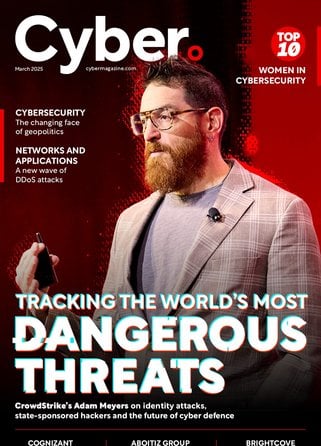What would you do if you found yourself in a situation where your organization is at risk due to everyday security vulnerabilities? Picture the growing complexities of securing identities in a digital world that increasingly relies on artificial intelligence. Recent findings from Cisco’s 2025 State of Identity Security report uncover some startling realities about the state of identity security across several organizations. Let’s explore these insights and what they might mean for you and your organization.

This image is property of i.ytimg.com.
Understanding the Identity Crisis in Cybersecurity
Identity security is no longer just a component of your security framework; it’s at the forefront of protecting your organization against increasingly sophisticated threats. Cisco’s study reinforces the critical need for effective identity management while revealing significant gaps in confidence regarding current identity solutions.
The Current Landscape of Identity Security
As organizations become more aware of identity-related attacks, many find themselves exposed due to inadequate security measures. With 82% of firms indicating an increase in budgets for identity security, it becomes clear that the acknowledgment of risk has grown, yet the gap in effective execution remains alarming.
Key Findings from Cisco’s Study
The report from Cisco underscores several critical aspects of identity security. Here’s a snapshot of the findings that could impact your strategic decisions:
- Confidence Gap: Only 33% of IT leaders express confidence in their identity provider’s ability to prevent identity-based attacks.
- Financial Impact: Over 51% of organizations reported financial losses due to identity-related breaches.
- Adoption of New Practices: Despite concerns, only 19% of businesses have implemented FIDO2 authentication tokens, which are essential for robust security.
These statistics showcase the pressing need for organizations to reassess their identity security strategies.
The Growing Threat of AI in Cybersecurity
AI is undoubtedly reshaping the landscape of cybersecurity, presenting both challenges and opportunities. Organizations need to harness AI’s potential to strengthen defenses while simultaneously preparing for the innovative threats it introduces.
The Dual Impact of AI
AI-driven phishing attacks are becoming increasingly sophisticated, making them a top concern among security leaders. Matt Caulfield from Cisco highlights that 44% of leaders view AI-driven phishing attacks as a primary identity threat for 2025. With such a rising threat, it’s essential to recognize how AI can both pose significant risks and offer powerful solutions.
Modernizing Security Practices
Organizations are responding to the challenges presented by AI by adopting security-first identity practices. Cisco’s research indicates that 85% of companies are modifying their identity-related operations to address these threats effectively. This modernization isn’t optional anymore; it’s a necessity to safeguard against the automation of attacks.

This image is property of assets.bizclikmedia.net.
Gaps in Multi-Factor Authentication Deployment
Multi-Factor Authentication (MFA) is touted as one of the vital tools in the cybersecurity arsenal, yet its deployment remains worryingly inadequate. Although 87% of leaders consider phishing-resistant MFA critical, the actual confidence in current phishing controls is remarkably low at 30%.
The Statistics Behind the Gaps
Let’s break down these trust issues associated with MFA:
| Issue | Percentage |
|---|---|
| Weak or Missing MFA | 36% |
| Coverage Gaps | 34% |
| One-time Passcode Failures | 29% |
These statistics reveal how significant the vulnerability in current identity protection measures can be, leaving organizations open to breaches that could have been easily prevented.
Challenges in Adopting Advanced Security Measures
It’s not just about understanding the importance of security; it’s about the practical challenges that arise in deploying necessary measures. Organizations often view identity security as an afterthought, with many security measures retrofitted rather than integrated from the ground up.
Why a Proactive Approach Is Essential
Research shows that 74% of IT leaders recognize that identity security is often treated reactively. This approach leads to unnecessary costs and complexity that can detract from overall security efforts. With 79% of teams looking to consolidate vendors to improve oversight, there’s pressure to bridge these gaps.

This image is property of assets.bizclikmedia.net.
The Importance of Integration in Identity Security
One of the more pressing issues highlighted is the lack of integration across identity and device telemetry systems. Only 52% of organizations report full integration, resulting in fragmented visibility into identity behaviors. This lack of real-time visibility is detrimental as it hampers decision-making regarding access control and threat response.
Addressing Third-Party Access Control
The growing concern around third-party access control is difficult to overlook. 86% of leaders are worried about inadequate controls for contractors and external parties. This extended perimeter requires robust oversight; without it, organizations risk exposing themselves significantly.
The Importance of Identity Threat Detection and Response
The acknowledgment that identity threat detection and response capabilities are crucial cannot be overstated. 87% of leaders consider such systems necessary for a strong security posture. Yet, the implementation of Identity Security Posture Management (ISPM) tools is limited, with only 32% of IT teams having deployed these solutions.
Why You Should Care About Identity Security Management
Failing to implement adequate identity security management tools leaves organizations vulnerable. Without these tools, you may lack the necessary insights to effectively manage identity risks, heightening the potential for breaches.

This image is property of assets.bizclikmedia.net.
Building a Strategic Identity Security Framework
With all these issues at hand, where does that leave you in terms of building a robust identity security strategy? It’s essential to take strategic steps rather than relying on reactive measures.
Prioritizing Identity Security in Your Planning
As Matt Caulfield suggests, managing who accesses what, from where, and on which device is not merely a daily operational challenge; it’s a strategic necessity.
- Invest in Comprehensive Identity Solutions: Moving beyond basic MFA solutions and adopting advanced identity management tools tailored to your organization’s needs is vital.
- Ensure Continuous Monitoring and Integration: Integrating all relevant identity and device telemetry systems helps provide a clearer picture of potential threats, guiding better decision-making.
Moving Forward: Bridging the Confidence Gap
Addressing the confidence gap highlighted in the Cisco study isn’t something that happens overnight. It’s a journey toward creating a more secure future for your organization.
Take Action
-
Assess Your Current Strategies: Review your current identity security measures and determine where gaps exist.
-
Educate Stakeholders: Ensure that decision-makers understand the risks and the importance of investing in identity security.
-
Rightsize Your Technology Stack: Avoid tool sprawl by integrating solutions that provide the data and insight you need for informed decision-making.
Embrace Change and Adapt
As threats evolve, so too must your strategies. The Cisco study highlights a significant need for adaptability in your identity security framework. Embracing both the challenges and opportunities presented by the evolving landscape will be crucial for long-term success.

This image is property of i.ytimg.com.
Conclusion: The Future of Identity Security
Navigating the complexities of identity security requires both a strategic vision and cohesive execution. You stand at a pivotal junction where your decisions can substantially impact your organization’s resilience against attacks. As you think about the findings from Cisco’s 2025 report, consider how you can strengthen your security posture, bridge the confidence gap, and ensure your organization is prepared to tackle the challenges ahead.
By taking proactive steps today, you’re not just safeguarding identities; you’re setting the foundation for a secure future for everyone involved in your organization. It’s time to turn awareness into action and commitment into results, creating an environment where identity security is prioritized proactively rather than reactively. Keep moving forward; the security of your organization and its identity depend on it!